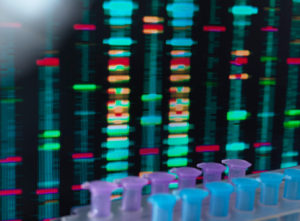Clustered regularly interspaced short palindromic repeats (CRISPR) and Cas proteins evolved as part of the prokaryotes adaptive immune system. Cas proteins cut and capture small pieces of bacteriophage nucleic acid which are then stored in arrays separated by repeat sequences. These CRISPR arrays are then transcribed into RNA and cut into individual viral pieces flanked by a repeat sequence. CRISPR guide RNA-Cas complexes then roam and scan cutting complementary invading phage nucleic acids allowing prokaryotic cells to survive. Over the past 6 years, scientists have utilized the CRISPR-Cas system to easily edit genes by changing the guide RNA. Once the target gene is cut, cells naturally work to repair the double strand break, which can either result in knocking out the gene or fixing the break with an engineered sequence of nucleotides. A key challenge of the CRISPR-based genome editing technology is that off-target effects lead to unintended mutations, and the edited cells must be screened. Nevertheless, the CRISPR-Cas system holds great potential for precisely targeting and editing well understood genetic aberrations for sickle cell disease, β-thalassemia, and other monogenic diseases. The CRISPR-Cas gene-editing system may also be used to generate erythroid and hemopoietic progenitor cells void of antigens, attenuating the effects of alloimmunization, and to identify minute amounts of bacterial or viral nucleic acids aiding in diagnostic screening. This simple and powerful gene editing tool holds great promise, but it also raises ethical concerns.
Reference:

